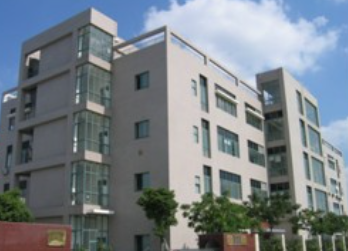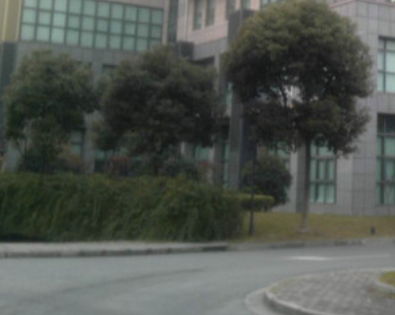
利用两个全取代或多取代的反应前体一步反应进行苯环关环得到多取代的苯环或杂芳环的反应。此反应非常高效,可以制备很多有用的多取代芳烃化合物。
利用烯基烯酮和活性炔进行苯环环化的方法已经得到很好的应用,并制备了很多具有生物活性的分子。近期研究发现,N-膦酰基炔胺是制备多取代苯环很好的前体,其区域选择性很高,是很好的制备吲哚和氮杂芳环的底物。
反应机理
此反应机理是一种“两步反应机理”,反应先得到环丁烯酮中间体,然后开环得到烯基烯酮关环得到苯环。光催化下α-重氮酮进行Wolff重排得到烯基烯酮,然后和N-膦酰基炔胺进[2 + 2] 环加成得到环丁烯酮中间体,接着在光或热催化下进行可逆的四电子的电环化裂解得到烯基烯酮,最后进行6-π电环化关环重排得到产物。

各种烯基,芳基和杂环芳基α -重氮酮都可以通过此反应制备稠环芳烃和杂化芳烃。在一些底物的反应中,会得到环丁烯酮中间体和产物芳烃的混合物,这可以很好的证明“两步机理”。在此种情况下,加热混合物一段时间可以的酚类芳烃产物。


此反应的特点就是应用了N-膦酰基炔胺作为底物,此底物比之前的N-磺酰基和N-酰基取代的炔胺要快很多。此反应使用了流动光催化反应器,反应底物通过FEP( fluorinated ethylene-propylene)细管可以充分的进行光照,反应比一般的在反应容器中的光照反应更加充分。而且通过细管后生成的产物,直接进入接收容器,不会因为继续接受光照而分解。

操作步骤

A. 2-Diazo-1-(2,4-dimethylphenyl)ethan-1-one (1).
A 250-mL, three-necked, round-bottomed flask (Note 1) equipped with a 25 x 10 mm, Teflon-coated, octagonal magnetic stir bar is placed in a glove box. Solid LiHMDS(1.81 g, 13.5 mmol, 1.1 equiv) (Note 2) was weighed out in the glove box, added to the flask, and three septa are attached. The flask is removed from the glove box and equipped with an argon inlet adapter and a 50-mL pressure-equalizing addition funnel fitted with a rubber septum. The third septum is fitted with a thermocouple temperature probe. Tetrahydrofuran (35 mL) (Note 3) is added by syringe and the solution cooled to -78 °C in a dry ice-acetone bath (Note 4). A solution of 2′,4′-dimethylacetophenone (1.82 mL, 1.81 g, 12.2 mmol, 1.0 equiv) (Note 5) in 27 mL of THF is added via the addition funnel over 15 min while the internal temperature of the reaction mixture is kept below -70 °C. The addition funnel is rinsed with two 5-mL portions of THF. The reaction mixture is stirred at -78 °C for 1 h and then 2,2,2-trifluoroethyl trifluoroacetate (1.97 mL, 2.88 g, 14.7 mmol, 1.2 equiv) (Note 6) is added rapidly in one portion via syringe. After 30 min, the yellow solution is poured into a 500-mL separatory funnel containing 120 mL of diethyl ether and 120 mL of 5% aqueous HCl solution. The aqueous layer is separated and extracted with two 60-mL portions of diethyl ether. The combined organic layers are washed with 120 mL of saturated NaCl solution, dried over 10 g of anhydrous MgSO4, and filtered through a 30-mL sintered glass Büchner funnel (medium porosity, 30 mm diameter). The MgSO4 is washed with diethyl ether (3 x 10 mL) and the combined filtrate is concentrated by rotary evaporation (20 °C, 20 mmHg) to afford 4 g of a yellow oil. This material is immediately dissolved in 15 mL of acetonitrile and transferred via glass funnel (9 cm diameter) to a 250-mL single-necked, round-bottomed flask equipped with a 25 x 10 mm, Teflon-coated, octagonal magnetic stir bar (Note 7). The original flask is rinsed with acetonitrile (2 x 5 mL), which is transferred via glass funnel (9 cm diameter) to the 250-mL flask. water (0.22 mL, 12.2 mmol, 1.0 equiv) and triethylamine(2.56 mL, 1.86 g, 18.4 mmol, 1.5 equiv) (Note 8) are added via syringe. A 50-mL pressure-equalizing addition funnel is attached. A solution of 4-acetamidobenzenesulfonyl azide (4.41 g, 18.4 mmol, 1.5 equiv) (Note 9) in 25 mL of acetonitrile is then added via the addition funnel over 15 min. The addition funnel is rinsed with 5 mL ofacetonitrile and the reaction flask is wrapped with aluminum foil. The resulting dark yellow solution is stirred at room temperature for 2 h, during which time a white precipitate appears (Figure 1).
The solution is then concentrated by rotary evaporation (40 °C, 20 mmHg) to provide 10.7-16.6 g of a thick yellow suspension. This material is diluted with 1:1 diethyl ether-hexanes (100 mL) and filtered through 5 g of Celite in a 30-mL sintered glass funnel (medium porosity, 30 mm diameter) into a 250-mL, round-bottomed flask. The solid material is washed with 1:1 diethyl ether-hexanes (3 x 15 mL), and the filtrate is then concentrated by rotary evaporation (20 °C, 20 mmHg) to yield 2.8-4.7 g of a dark yellow oil.

This material is dissolved in a minimum amount of 1:7 ethyl acetate-hexanes (ca. 6 mL) and loaded onto a column (64 mm diameter) of 200 g of silica gel (Note 10) prepared as a slurry in 1:7 ethyl acetate-hexanes. Elution with 1:7 ethyl acetate-hexanes (35 mL fractions collected in 20 x 150 mm test tubes) affords the product in fractions 21-57. These fractions are combined and the solvent is removed by rotary evaporation (20 °C, 20 mmHg). Further concentration at room temperature, 0.05 mmHg for 1 h provides 1.77 g (83%) of diazo ketone 1as a yellow crystalline solid (Notes 11 and 12).
B. Diethyl benzyl(3-hexyl-4-hydroxy-6,8-dimethylnaphthalen-2-yl)phos-phoramidate (2).
Figure shows the continuous flow photochemical reactor employed for this reaction. Fluorinated ethylene propylene (FEP) tubing, o.d. = 1.59 mm, i.d. = 0.76 mm, length = 1520 cm (Note 13), is wrapped around a quartz immersion well in tightly packed coils leaving 90 cm of tubing free at each end. The length of tubing wrapped around the well is 1340 cm (internal volume = 6.1 mL). The ends of the tubing are secured to the well with Teflon tape. The top end of the tubing is fitted with a nut, ferrule, and a thread to a female Luer adapter for attachment to a syringe as shown in Figure 2. The bottom end of the tubing is connected through a rubber septum to a 100-mL, round-bottomed flask equipped with an argon inlet needle and a needle vent.

The receiving flask is wrapped in aluminum foil (Figure 3). The immersion well is connected to recirculating tap water via PVC tubing. A Pyrex filter and a Hanovia 450 W medium-pressure mercury lamp are placed inside the immersion well (Note 14).

A 100-mL pear flask equipped with a rubber septum and argon inlet needle is charged with 2-diazo-1-(2,4-dimethylphenyl)ethan-1-one (1) (1.56 g, 8.90 mmol, 1.2 equiv), diethyl benzyl(oct-1-yn-1-yl)phosphoramidate2(2.63 g, 7.48 mmol, 1.0 equiv), and CH2Cl2 (30 mL) (Notes 15 and 16). The yellow solution is degassed via three freeze-pump-thaw (-196 °C, 0.05 mmHg) cycles. A 20-mL plastic syringe is charged with 5 mL of CH2Cl2, the syringe is connected to the Luer adapter, the lamp is turned on (Note 17), and the 5 mL of CH2Cl2 is pumped through the system at a rate of 0.58 mL/min (Note 18). Approximately one-half of the reaction mixture is transferred to a 20-mL plastic syringe and pumped through the system at a rate of 0.58 mL/min (calculated residence time = 10.4 min). The syringe is charged with the other half of the reaction solution which is then pumped through the system. The total time required for the injection of the 30-mL reaction solution is 50 min. The 100-mL pear flask is then rinsed with two 0.6-mL portions and one 9 mL portion of CH2Cl2 with each portion pumped through the tubing at a rate of 0.58 mL/min. The lamp is turned off, the aluminum foil on the 100-mL collection flask is removed, and the orange solution is concentrated by rotary evaporation (20 °C, 20 mmHg) to afford 3.97 g of dark orange oil (Note 19). This material is dissolved in 50 mL of toluene (Note 20) and the flask is equipped with a 20 x 10 mm, Teflon-coated, oval magnetic stir bar and an 11-cm Liebig condenser fitted with an argon inlet adapter. The orange solution is heated at reflux in an oil bath for 5 h and then concentrated to afford 3.70 g of orange solid (Note 21). This material is dissolved in 15 mL of CH2Cl2 and concentrated onto 10 g of silica gel. The resulting free-flowing powder is deposited onto a column (80 mm diameter) of 300 g of silica gel prepared as a slurry in 1:2 ethyl acetate-hexanes. Elution is carried out with a gradient of 1:2 to 4:1 ethyl acetate-hexanes, with a ratio of 1:2 EtOAc-hexanes used for fractions 1-81, 1:1 for fractions 82-121, 2:1 for fractions 122-151, and 4:1 for the remaining fractions. Fractions (35 mL) are collected in 20 x 150 mm test tubes. The desired product is obtained in fractions 70-164. These fractions are combined and the solvent is removed by rotary evaporation (20 °C, 20 mmHg). Further concentration at room temperature, 0.1 mmHg for 10 h provides 3.15 g (88%) of 2 as a pale yellow solid.
本文内容编译自:Org. Synth. 2016, 93, 127-145,
DOI: 10.15227/orgsyn.093.0127







